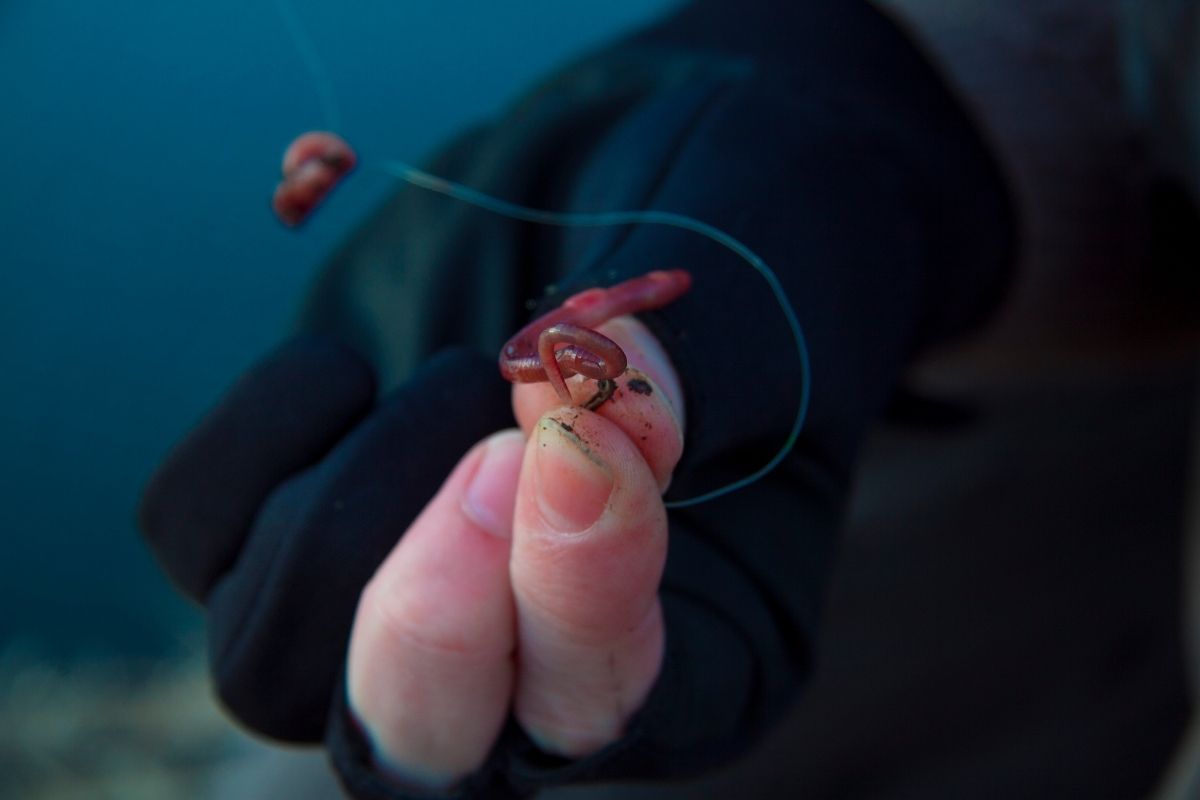Fishing is a great way to spend the day. Whether you choose to fish alone in bliss or with a loved one, there is nothing that beats this feeling.
Experienced or not, everyone knows about luring in fish with a worm, yet not everyone knows of the correct method.
In this article, we will help you to master your fishing skills by guiding you on how to put a worm on a hook, helping you to achieve a great catch.
Fishing With Bait
Bait is important to the fishing process for it is the thing which draws in the fish. It wouldn’t make sense to throw in a hook without anything on the end of it, so that is why fishers use tools to perk a fish’s interest.
It should be noted, however, that worms are not the only option. Not everyone (especially if you are new to fishing) feels comfortable enough to handle a live worm, let alone thread it through a hook.
Because of this, there are a variety of other options for fishers to use as bait when fishing.
Live Bait:
- Worms
- Insects
- Leeches
- Minnows
Artificial/Plastic Lures:
- Plug lure
- Spoon lure
- Spinnerbait lure
- Jigging lure
Why We Use Worms As Bait
Using worms as fishing bait is the cliché choice but it is one of the most effective. Although there are a variety of other options when it comes to fishing, worms are a favorite for many as it is one that gets the job done.
Part of a Fish’s Diet
It is common to see some species of fish, such as catfish, indulging in worms. Although this is not their main source of food, it is something that they enjoy on the side. Because of this, fish will be prone to following this bait.
Movement Attracts Fish
Naturally, the body of the worm on the hook will wiggling and flail everywhere. Seeing this in the water will be enough to attract a fish, especially since these movements are natural.
Unlike artificial bait where it will take moving the fishing rod to convince the fish, the natural movements of the wiggling worm calls for less suspicion, luring in fish more easily.
Fish are Drawn to a Worm’s Scent
Aside from the movements of the worm, worms also give off a scent which fish are familiar with. Because of this scent, fish will naturally gravitate towards the bait.
However, with this being said, the scent alone will not be enough to fool a fish. Using a dead worm may still keep its familiar scent, but its lack of movement will not help luring in fish. For the best results, you should use a live worm.
Does It Matter What Kind of Worm We Use to Fish?

Tyger Leader is reader-supported and may earn a commission when you book or purchase using our links. Learn more about our affiliate disclaimer here.
No, it does not matter what kind of worm you use, but for the best results it is best to use the Lumbricus Terrestris (this is the common earthworm). They are not only great for freshwater fishing but can be found in your own garden.
Hooking Your Worm
Hooking a worm is not as simple as placing it through the hook. It instead uses a lot more strategy and this strategy is put in place to ensure the worm is secure on the hook and in perfect place for the fish.
Below, we will be taking you through the steps to hooking your worm the correct way.
Step 1
Preparing your hook and worm
First you need to make sure that you are well prepared. You can choose to purchase a bundle of live worms or dig them out from your garden.
When doing this, make sure to only get worms when you know you want to use them. It is important to make sure that your hook is secured well onto the fishing line too.
Step 2
Push top of worm through the hook
When it comes to threading your worm through the hook, make sure to pick the right area of its body. You want the hook to go through around 1cm from the end of its body.
If the hook is too close to the end then the worm can easily wiggle itself out. When pushing it in, don’t let its movements put you off. Smoothly slide the worm through the hook.
Step 3
Push the long end of the worm through the hook
Ensure that the worm is slid down the hook before taking the longer side of the worm and pushing it through the hook too. Make sure to leave a “loop” between each pierced body part.
Continue threading the worm’s body through the hook until the length of its body is completely threaded through. By the end, you should come out with the worm zigzagged on the hook almost like an accordion.
Final Thoughts
In this article, we have gone through the steps on how to hook a worm. Hooking a worm is an easy skill but it does take a steady hand and a gentle touch. You want to make sure that you keep a firm grip as the worm will be flailing about.
You also want to be careful as you insert the hook through the body of the worm. It may be fiddly at first but after some practice you will be a pro in no time.
Of course, not everyone is comfortable with using a live worm as bait, especially those new to fishing.
Although using a worm is very beneficial for sustaining a great catch, that isn’t to say that using a worm is the only option. There are many other options of bait out there.
There are synthetic spoon lures, plug lures, jigging lures and spinnerbait lures. If you don’t mind using anything live, there are also alternatives such as using insects, leeches and minnows as bait.
Many look at fishing as a simple task but not everyone will know how to master hooking a worm. With this guide, now you will be able to.



